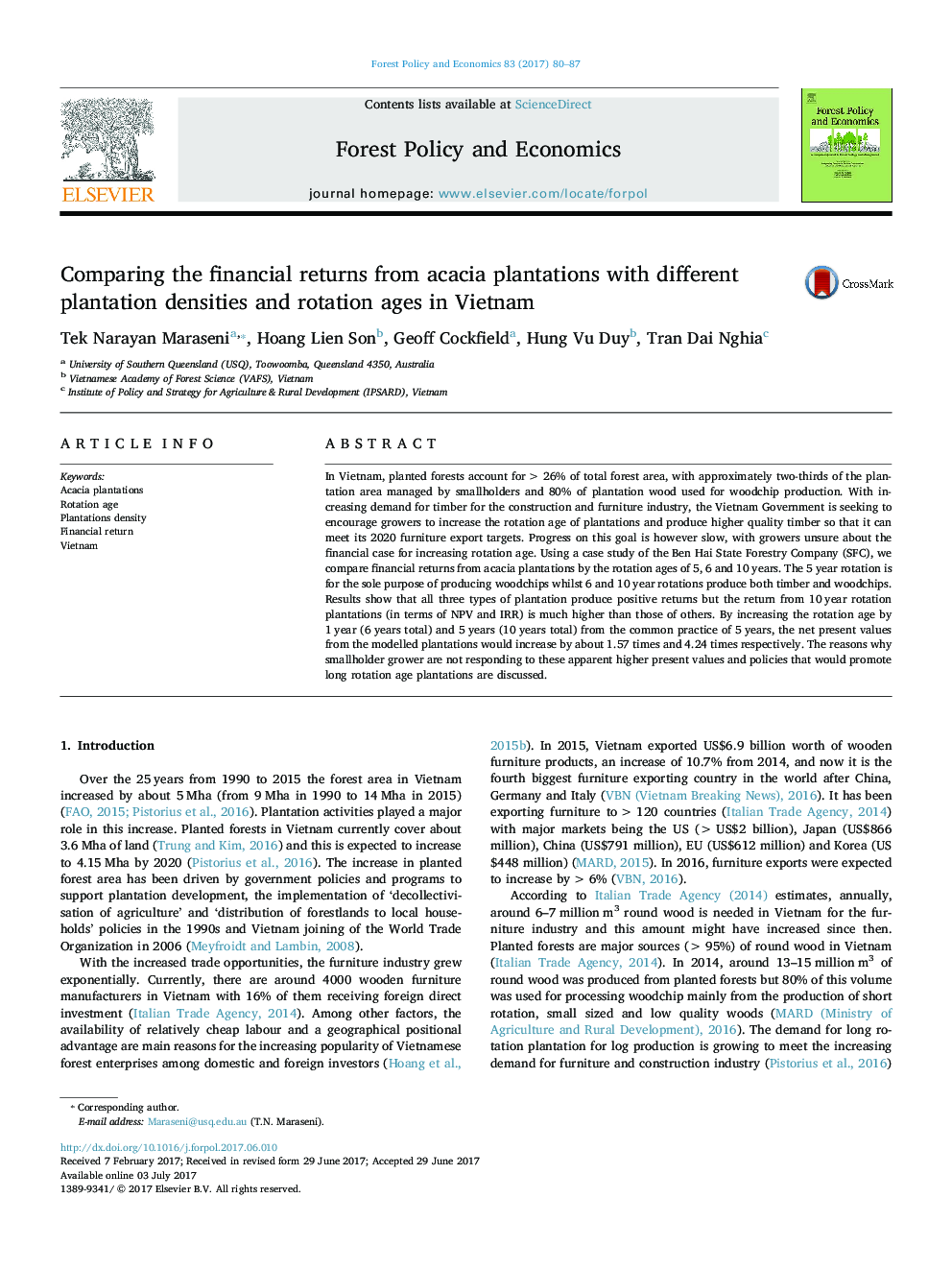| Article ID | Journal | Published Year | Pages | File Type |
|---|---|---|---|---|
| 6459671 | Forest Policy and Economics | 2017 | 8 Pages |
â¢Vietnam Government is encouraging growers to increase the rotation age of plantations.â¢Financial returns from acacia plantations with different rotation ages are assessed.â¢The return from 10 year rotation plantations is much higher than that of others.â¢Providing low interest loans and hurricane insurance could be helpful.
In Vietnam, planted forests account for >Â 26% of total forest area, with approximately two-thirds of the plantation area managed by smallholders and 80% of plantation wood used for woodchip production. With increasing demand for timber for the construction and furniture industry, the Vietnam Government is seeking to encourage growers to increase the rotation age of plantations and produce higher quality timber so that it can meet its 2020 furniture export targets. Progress on this goal is however slow, with growers unsure about the financial case for increasing rotation age. Using a case study of the Ben Hai State Forestry Company (SFC), we compare financial returns from acacia plantations by the rotation ages of 5, 6 and 10Â years. The 5Â year rotation is for the sole purpose of producing woodchips whilst 6 and 10Â year rotations produce both timber and woodchips. Results show that all three types of plantation produce positive returns but the return from 10Â year rotation plantations (in terms of NPV and IRR) is much higher than those of others. By increasing the rotation age by 1Â year (6Â years total) and 5Â years (10Â years total) from the common practice of 5Â years, the net present values from the modelled plantations would increase by about 1.57 times and 4.24 times respectively. The reasons why smallholder grower are not responding to these apparent higher present values and policies that would promote long rotation age plantations are discussed.
